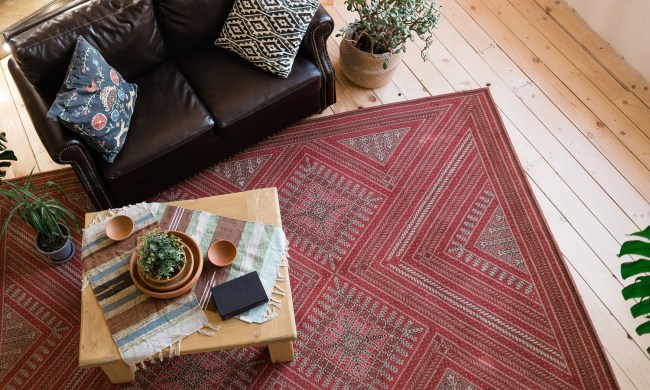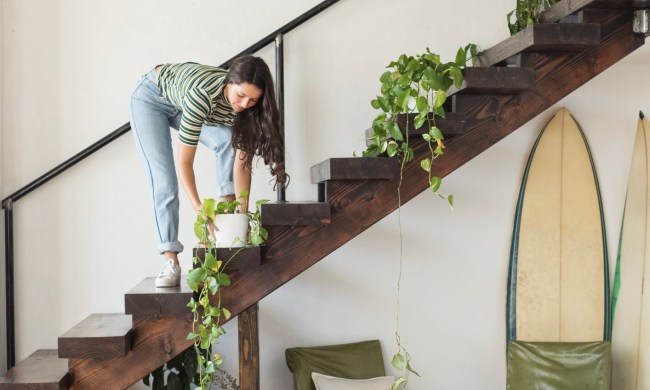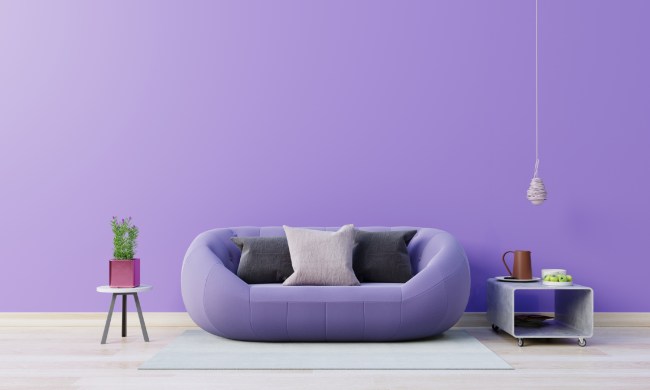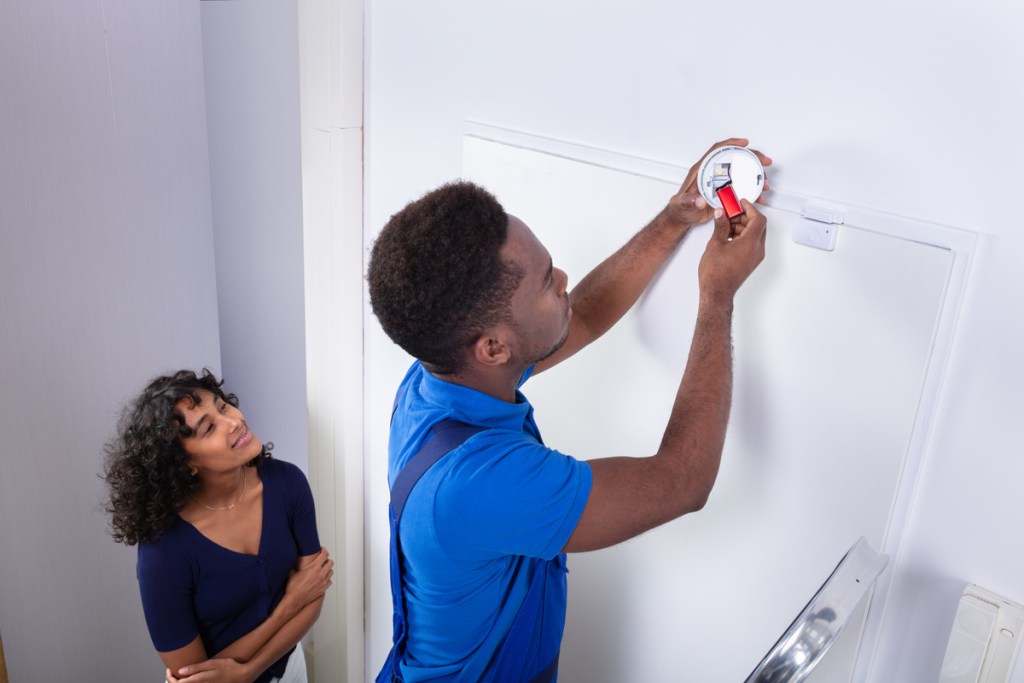
Your home is your oasis and your fortress. It should be a safe zone where you can relax and unwind, knowing that all is right in your world. But ignoring reality is not a helpful mindset. Big and small emergencies happen without warning, so it’s best to be prepared. These items will add to your peace of mind, knowing that you’re ready when the unexpected happens.
Smoke and carbon monoxide alarm
No one wants to hear an alarm blaring in the middle of the night. And, let’s face it, most home smoke alarms will only need to let you know that the bacon is burning. But, for a few bucks, a smoke and carbon monoxide (CO) alarm will reassure you that if anything does catch fire, you’ll find out before it’s too late.
The current standard is one ceiling-mounted smoke detector per floor of a home. Floors with more than 1,000 square feet of living space should have one per 500 square feet. Consider installing them away from the kitchen or bath to avoid nuisance alarms from cooking or bathroom steam.
First aid kit
From scrapes and cuts to bruises and sprains, there are endless small uses for a well-supplied first aid kit. It helps, too, if it’s in a convenient grab-and-go bag instead of spread among two or three different bathroom medicine cabinets.
Purchase a ready-made kit, or set one up from scratch. Use clear plastic sealable bags to compartmentalize the supplies, and place them all into a durable zipper bag or hard-sided latching box. The American Red Cross offers recommendations on what to keep in your home first aid kit.
Fire extinguisher
House and apartment fires happen for a variety of reasons. Owning and knowing how to use a fire extinguisher could mean the difference between a small amount of damage and a total loss of your home and possessions. Although the general recommendation is that each home should have one on every floor, consider keeping one near every higher-risk area such as the kitchen, garage, fireplace or woodstove, or workshop.
The United States Fire Administration (USFA) offers these guidelines on choosing and using fire extinguishers.

Contact list for doctors, poison control center, etc.
In an emergency, you’ll need quick access to the right contact. Everyone in the family should know to call 9-1-1 for serious emergencies. Additionally, homes should have prominently posted phone numbers and street addresses for all family doctors, specialists, and local hospitals. Other important phone numbers may include:
- Police and Fire departments (non-emergency)
- Poison Control Centers and ASPCA Animal Poison Control
- Power, Water, and Gas utility companies
- Animal control
- Tow truck and Locksmith
- Insurance agent
- Boss and coworkers
- Nextdoor neighbors
Disaster kit
Wildfires, floods, severe weather, and other natural disasters can knock out power for days at a time or even force us to evacuate our homes. Some variety of these events may strike any part of the country, so we all should make the necessary preparations for ourselves and our families well in advance.
Be prepared by storing these essential items in a closet, pantry, basement, or garage so that you have them when you need them:
- Three day supply of non-perishable food (ready to eat without preparation)
- 3 gallons of drinking water per person (1 gallon per person per day)
- A flashlight and extra batteries
- Solar cell phone charger
- Safety matches
- Candles
- Whistle
- Battery-powered or hand-crank radio and NOAA Weather Radio and extra batteries for both
- Copies of vital documents
- Can opener
- Personal hygiene products
- Pet food
- Cash
Deadbolt locks on outside doors
Security starts with keeping intruders out. Criminals know their way around basic doo knob locks, so step up your safety game with high-quality, heavy-duty deadbolt locks on outside doors. A deadbolt is integrated into the door above the knob and locks into the door frame. While you’re at it, spend a few more dollars and install a reinforced strike plate for the bolt.
Don’t forget to lock all doors, including garage entries. Other security measures that will deter burglars and home invaders include securing window locks, lighting up the landscape, eliminating hiding places such as tall bushes near doors or windows, and setting up security cameras.
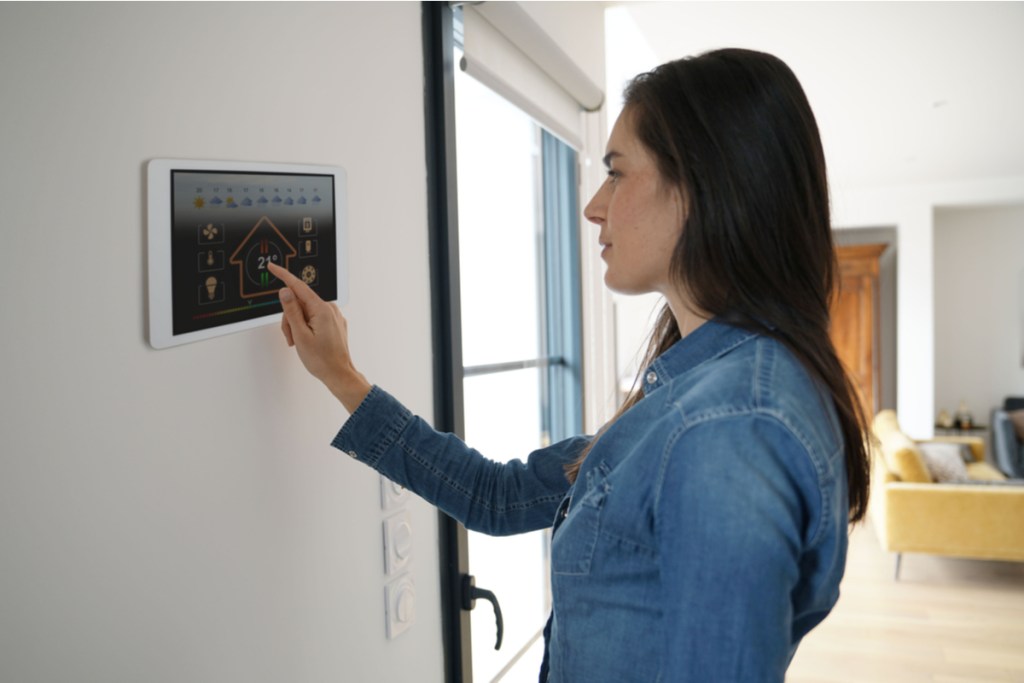
Wifi thermostat
The thermostat not only keeps you comfortable at home but if it’s Wifi-enabled, it can give you a status report while you’re away. If you happen to be out of town when the furnace goes out, a wifi thermostat will notify you of the problem so you can avoid frozen pipes or other expensive snowball effect damage. Of course, it also lets you control the temperature remotely, so you can turn it down while away or warm it up on your way back.
Childproofing
Even before they learn to crawl, babies have an uncanny ability to grab, scoot, or roll their way to overlooked danger. You don’t exactly have to think like a baby to childproof the home, but you do have to consider where they will be and how they may maneuver themselves, and the items they can reach. By the time they’re toddlers, children acquire a highly inquisitive nature and explore virtually everything with their mouths.
This is not an exhaustive list since each home is different. But these childproofing processes provide a basic level of safety from some of the most common household safety concerns.
- Install electric outlet covers on unused outlets.
- Secure power cords with a floor strip, wall anchor, or cable ties.
- Use baby gate(s) to restrict access through the house and block stairs.
- Secure bookshelves, dressers, and other “tippy” furniture to the walls.
- Trim the cords on window blinds.
- Install latch toilet seat covers.
- Install cabinet latches and locks in the kitchen and bath.
- Install stove knob safety covers.
Non-toxic houseplants
Houseplants are a wonderful addition to any home. They can help keep the air clean and provide a stress-relieving connection to nature. But young children, pets, and those with allergies may be at an elevated risk of adverse reactions to skin contact or ingestion with certain types of plants. In severe cases, contact may result in serious illness or anaphylaxis.
Avoid keeping houseplants with known toxins, such as oleander, dieffenbachia, caladium, philodendron, and pothos. Those with sensitivity to latex should avoid all members of the ficus family. Other plants that harbor allergens include English ivy, African violets, and orchids. Low toxicity, low allergen plant choices include palms, dracaenas, spathiphyllums, and sansevieria.
Home safety and security need not dominate every waking thought to be effective. Avoiding accidents, illness, and injuries should be a planning priority, after which you can automate maintenance. After purchasing and installing safety equipment, be sure to maintain it in working order. Set a calendar reminder for an annual fire extinguisher checkup and recharge (if needed) and install fresh batteries in smoke and CO detectors. Also, remember to update contact lists as new doctors, neighbors, or coworkers enter the picture. With a good plan and a well-equipped home, you will more fully enjoy your home oasis.

